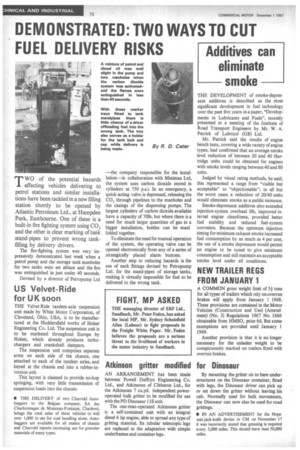DEMONSTRATED: TWO WAYS TO CUT FUEL DELIVERY RISKS
Page 72

If you've noticed an error in this article please click here to report it so we can fix it.
By R. D. Cater
TWO of the potential hazards affecting vehicles delivering to petrol stations and similar installations have been tackled in a new filling station shortly to be opened by Atlantic Petroleum Ltd., at Hampden Park, Eastbourne. One of these is a built-in fire fighting system using CO2 and the other is clear marking of tank stand-pipes to prevent wrong tankfilling by delivery drivers.
The fire-fighting system was very impressively demonstrated last week when a petrol pump and the storage tank manholes for two tanks were set ablaze and the fire was extinguished in just under 40 seconds.
Devised by a director of Petropump Ltd —the company responsible for the installation—in collaboration with Minimax Ltd, the system uses carbon dioxide stored in cylinders at 750 p.s.i. In an emergency, a quick-acting valve is depressed, releasing the CO, through pipelines to the manholes and the casings of the dispensing pumps. The largest cylinders of carbon dioxide available have a capacity of 701b, but where there is a need for much larger quantities of gas in a bigger installation, bottles can be mani folded together.
To eliminate the need for manual operation of the system, the operating valve can be opened electronically from any of a series of strategically placed alarm buttons.
Another step to reducing hazards is the use of neck fittings devised by Petropump Ltd. for the stand-pipes of storage tanks, making it virtually impossible for fuel to be delivered to the wrong tank.




























































































































































































